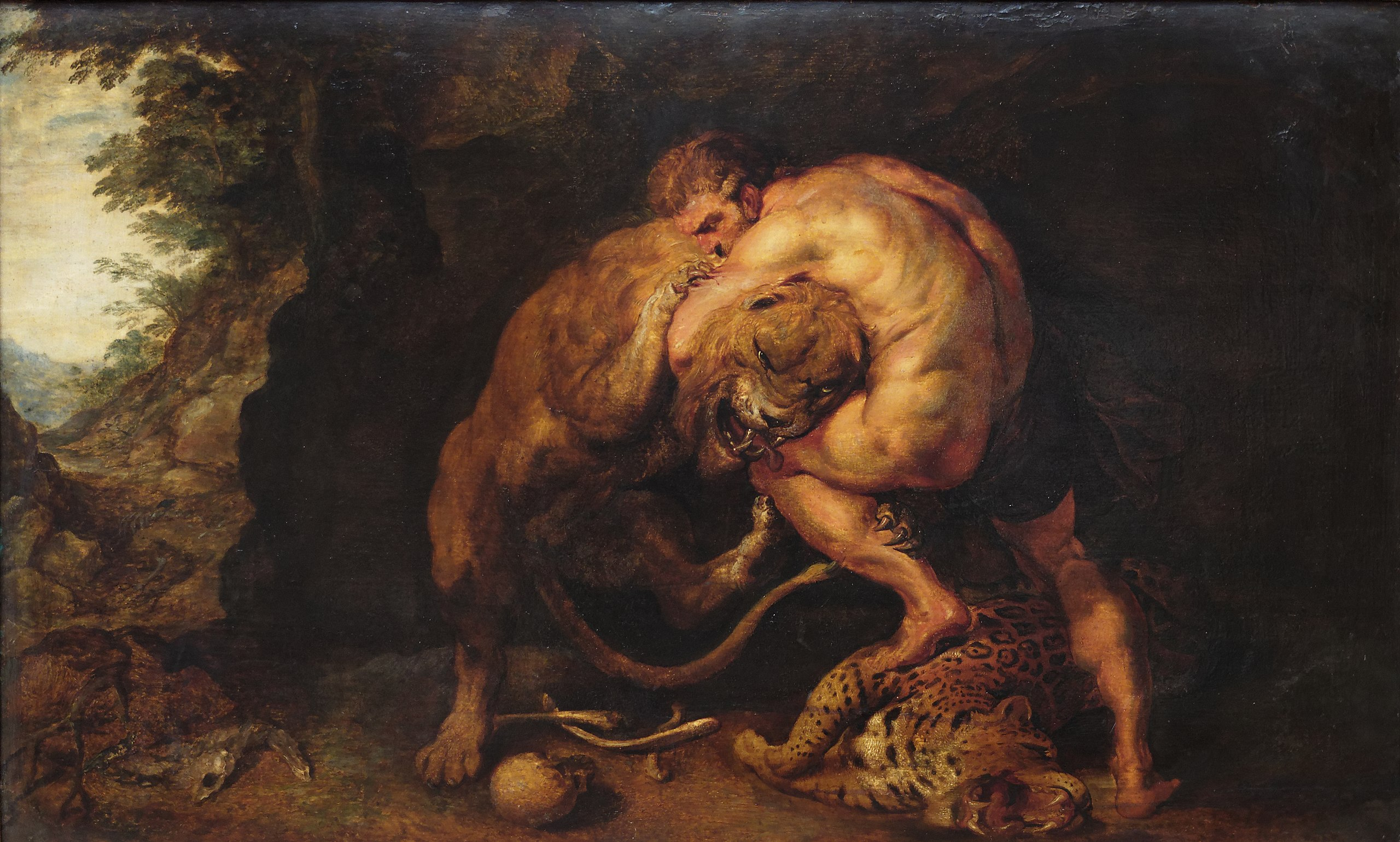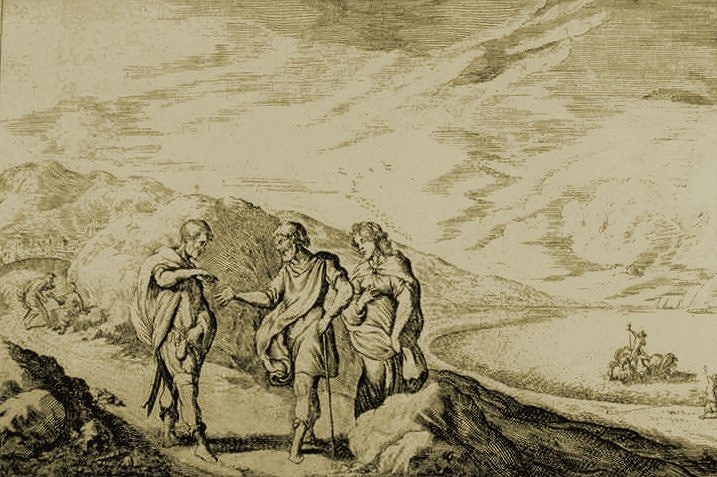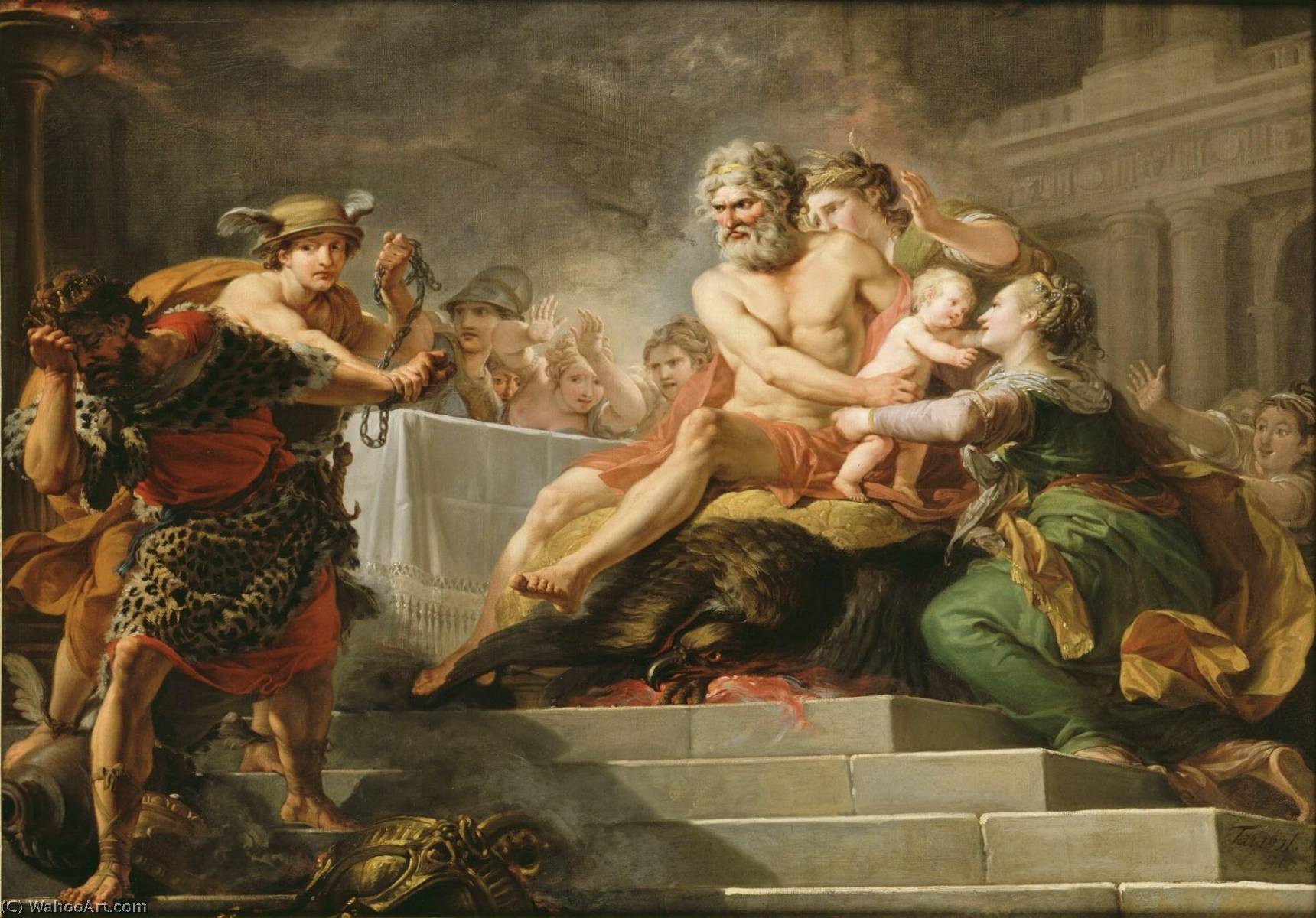AI-generated article summary
Searching for the legend of ‘Pyramus and Thisbe’? Step into an ancient love story woven through the fabric of time, influencing literature, music, and the arts in profound ways. This narrative paints the ordeal of lovers tangled by cruel fate, a theme that echoes from Babylonian origins to contemporary adaptations. In the coming sections, unravel the layers of their story, appreciate its literary journey, and discover its undying resonance across cultures.
Key Takeaways
Pyramus and Thisbe is a powerful legend of two lovers from feuding families in Babylon whose tragic misunderstanding leads to their dual suicide, resonating through time in literature and art.
Their love story and deaths captivated not only the ancient world, with retellings by Ovid and Shakespeare, who reimagined the tale within ‘A Midsummer Night’s Dream,’ but also modern adaptations, reflecting its timeless nature.
The myth’s influence extends across various media and epochs, showcasing the tale’s adaptability with retellings in contemporary culture, as well as alternative interpretations that highlight its enduring impact and cultural significance.
The Legend of Pyramus and Thisbe
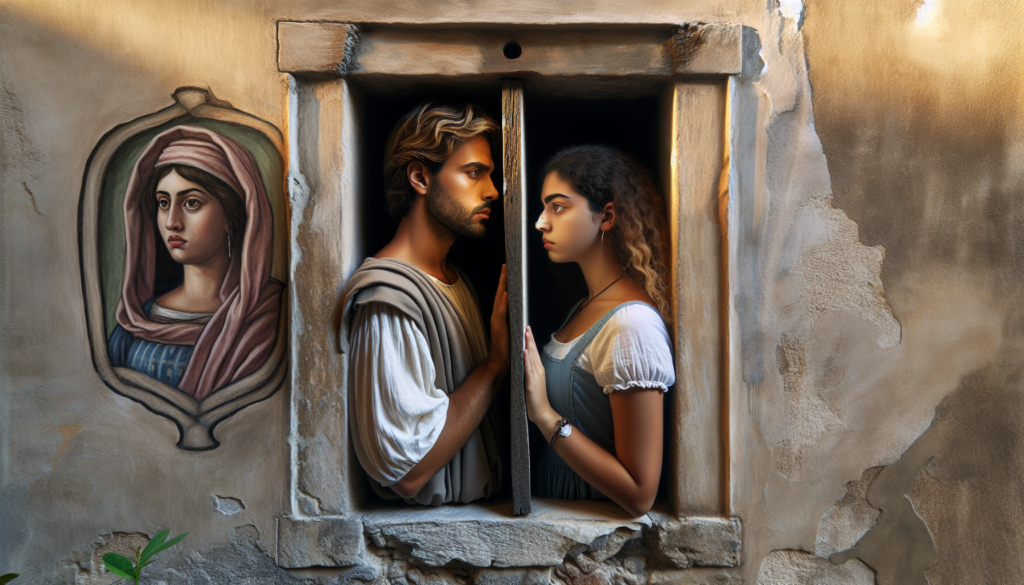
At the heart of Babylon, a city steeped in history and ancient culture, our tale begins. The story of Pyramus and Thisbe, two young lovers shackled by their feuding families, is a poignant narrative of love against all odds. It’s a story that transcends time, resonating through the centuries and inspiring countless adaptations, even finding its way into Greek mythology.
Let’s explore their forbidden romance, the tragic misunderstanding that led to their untimely demise, and the mythological significance of their tale.
The Forbidden Romance
In the midst of Babylon’s hustle and bustle, Pyramus and Thisbe, two young lovers, found themselves involved in a forbidden romance as two lovers. Their two families, driven by deep-seated animosity, stood as insurmountable barriers between their union. The lovers’ desire to marry remained an elusive dream, a yearning that echoed through the city’s ancient walls.
Undeterred by their families’ feud, they couldn’t show their love openly, Pyramus and Thisbe still found a way to be close to each other. They lived beside each other, with connected houses and just a wall separated byspara. One day, they found a tiny crack in that wall. Through this crack, they whispered their affection for each other, their love notes carried by the wind and imbued in the ancient stones.
The ill-fated lovers wanted so much to be together without their families interfering. So, that night they planned to escape and meet secretly at the edge of the city. They chose to meet under a big mulberry tree with white berries, far from their families’ watchful eyes. They hoped that there, at last, they could be together.
The Tragic Misunderstanding
On a fated day, under cover of twilight, Thisbe arrives first at their secret meeting place near Ninus’ tomb, a location reminiscent of a John William Waterhouse painting. But a terrifying sight awaited her – a lioness, a wild beast with a blood-smeared face from a recent kill. Overwhelmed by fear, Thisbe fled, leaving her cloak behind, which the lioness later mauled. As the story unfolds, Thisbe returns to the scene, only to find her lover’s tragic fate.
Soon after, Pyramus arrives at the scene. His eyes met the bloodied, mangled cloak, and his heart sank. Consumed by despair, he mistakenly believes the lioness killed his beloved Thisbe. This tragic misunderstanding sets the stage for a series of heart-wrenching events that will forever seal their fate.
The Lovers’ Demise
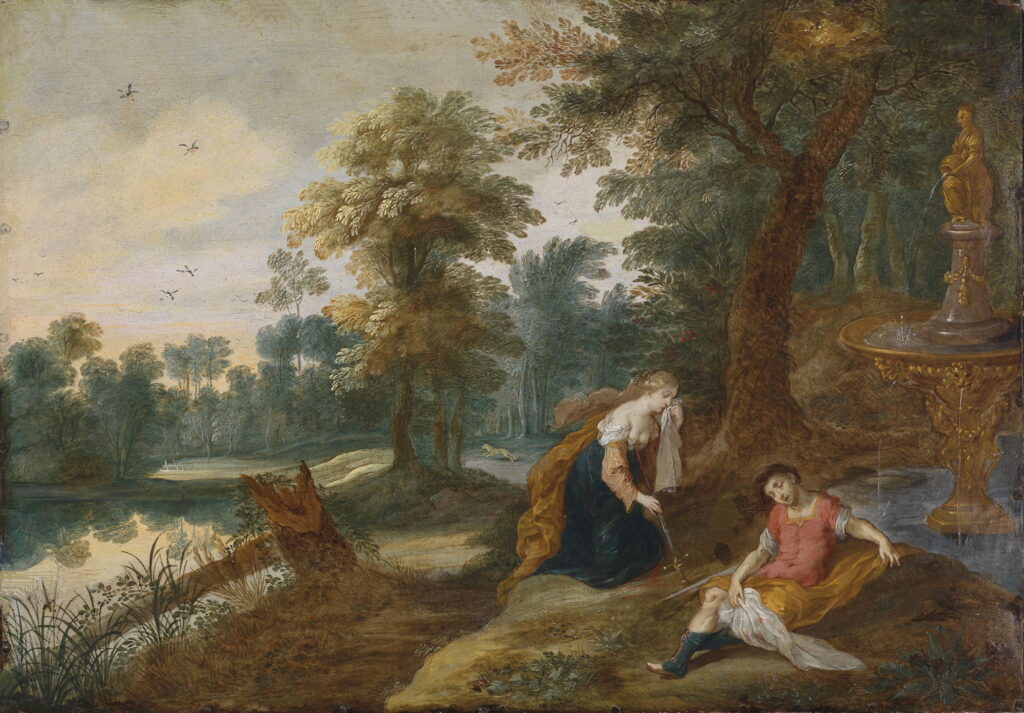
In his desolation, Pyramus made a tragic decision. Believing that Thisbe was dead, he decided he could not live without her. Overwhelmed with grief, he unsheathed his sword and took his own life. His blood spilled over the ground, staining the earth beneath a mulberry tree.
Despite their disagreement, both families would have suspended their hostilities and buried the two lovers in the same tomb.
When Thisbe returned, she was greeted by the heartbreaking sight of Pyramus’ lifeless body. Consumed by her love and grief for Pyramus, she decided to join him in death. She picked up Pyramus’ sword, and with a final declaration of their undying love, she ended her own life. Their double suicide marked the tragic culmination of their love story, a finale that echoed their shared wish never to be parted.
The Mythological Significance
Their tragic end did not go unnoticed by the gods. Moved by the lovers’ plight, they decided to honor their forbidden love by forever changing the color of the fruits of mulberry trees from white fruit to a dark red, symbolizing the blood they shed. In some versions of the myth, the blood would have stained the fruits, making them sweeter.
Thus, the story of the ill-fated lovers became eternally linked with the mulberry tree. Every time the fruits ripen to a deep red, they remind us of the lovers’ tragic end, keeping their story alive in mythological lore.
The tale of Pyramus and Thisbe, marked by love, sacrifice, and tragedy, continues to resonate with every ripening mulberry fruit.
Echoes in Literature: From Ovid to Shakespeare
The tale of Pyramus and Thisbe has echoed through the corridors of literature, influencing numerous works over the centuries. The story found its first literary expression in Ovid’s ‘Metamorphoses,’ leaving an indelible mark on the landscape of ancient literature. It was then carried forward to the Elizabethan era, leaving its traces in the works of Shakespeare, who cleverly weaved their narrative into his plays.
Ovid’s Metamorphoses
The tale of Pyramus and Thisbe was artfully woven into Ovid’s epic, ‘Metamorphoses.’ Ovid painted Pyramus as the most handsome young man and Thisbe as the loveliest of eastern girls, both living in adjoining houses near the walls of Queen Semiramis’s city. Their love story, marked by forbidden love and tragic death, resonated through the pages of ‘Metamorphoses,’ captivating readers and inspiring countless retellings.
Ovid’s portrayal of Pyramus and Thisbe:
brought their story to life
laid the groundwork for its enduring presence in literature and the arts
serves as the cornerstone of the narrative, shaping its future interpretations and adaptations.
Shakespeare’s Interpretation
William Shakespeare, a maestro of the Elizabethan era, ingeniously incorporated a satirical version of ‘Pyramus and Thisbe’ in his play, A True Midsummer Night’s Dream. Through a play-within-a-play performed by the ‘Rude Mechanicals,’ he presented a comically flawed enactment of the tragic tale. The characters, notably Bottom as Pyramus and Flute as Thisbe, humorously transformed the original tragedy into a source of amusement for the audience within ‘A Midsummer Night’s Dream’.
While providing comic relief, this reinterpretation served a deeper purpose. It underscored the thematic links between the main narrative and the ‘Pyramus and Thisbe’ subplot, particularly the themes of forbidden love and the impact of misunderstandings, thus adding a layer of complexity to ‘A Midsummer Night’s Dream’.
From Stage to Screen: Adaptations and Influences
From ancient texts to contemporary media, the tale of Pyramus and Thisbe has permeated various forms of artistic expression. Its timeless appeal, often referred to as the “contents pyramus,” has inspired:
Stage plays
Operas
Films
Television shows
This proves its enduring relevance and influence.
Let’s explore how this ancient love story has been transformed and retold over time, from classical and Renaissance retellings to its resonance in contemporary culture.
Classical and Renaissance Retellings
During the Classical and Renaissance periods, the tale of Pyramus and Thisbe found a new breath of life. Notable authors, such as the Roman poet Ovid, Geoffrey Chaucer, and John Gower, revisited and adapted the tragic love story into their works. In his ‘Legend of Good Women,’ Chaucer was one of the earliest English authors to retell the story, bringing it to the English-speaking world.
Another prominent figure of the English literary scene, John Gower also adapted the tale in his ‘Confessio Amantis.’ He presented the story as a cautionary tale, adding a moral dimension to the narrative. These retellings not only spread the legend of Pyramus and Thisbe but also enriched it, adding layers of interpretation and meaning.
Contemporary Culture
Even in today’s entertainment and literature, the narrative of Pyramus and Thisbe continues to resonate. Its themes of forbidden love and tragic misunderstandings find parallels in contemporary narratives, allowing the ancient tale to connect with modern audiences. For instance, the 2012 episode of The Simpsons, ‘The Daughter Also Rises,’ subtly echoed the theme of forbidden love, reminiscent of Pyramus and Thisbe’s iconic romance.
The tale’s adaptability extends beyond television. It has inspired contemporary literature and even opera. Bolu Babalola’s ‘Love in Color’ reimagines the tragic story of Pyramus and Thisbe, transforming it into a contemporary tale of college students who achieve a happy ending, unlike their mythological counterparts. Similarly, John Frederick Lampe’s musical piece ‘Pyramus and Thisbe’ reveals the story’s lasting appeal, enchanting modern audiences through the medium of opera.
Summary
The tragic tale of Pyramus and Thisbe, deeply rooted in Greek mythology, has left an indelible mark on literature, the arts, and popular culture. From Ovid’s ‘Metamorphoses’ to Shakespeare’s ‘A Midsummer Night’s Dream,’ from Chaucer’s ‘Legend of Good Women’ to modern adaptations in film, television, and opera, the story has transcended time and geography. Its themes of forbidden love, tragic misunderstandings, and the agony of separation have resonated with audiences across generations. The tale of Pyramus and Thisbe, much like the red mulberries, continues to remind us of love’s intensity, tragedy, and undying nature.
Frequently Asked Questions
What is the story of Thisbe and Pyramus?
The story of Pyramus and Thisbe dates back to ancient times, featuring two young lovers forbidden to marry. Despite their parents’ opposition, they planned to elope and meet under a mulberry tree, which led to a tragic end for both of them.
Is Romeo and Juliet based on Pyramus and Thisbe?
Yes, Romeo and Juliet is based on the story of Pyramus and Thisbe, as both stories are tales of forbidden love between young couples from feuding families. Ovid’s Metamorphoses tells the story of Pyramus and Thisbe, serving as the foundation for Shakespeare’s work.
What is the main idea of Pyramus and Thisbe?
The main idea of Pyramus and Thisbe revolves around their tragic love story, which highlights the complications and selflessness of love, ultimately leading to a commemoration by the gods. The story portrays their unwavering love, the theme of self-sacrifice, and the tragic fate resulting from the complications of the real world.
Why did Pyramus think Thisbe was dead?
Pyramus thought Thisbe was dead because he found her torn cloak stained with blood, leading him to believe a lion had killed her. This misunderstanding ultimately led to his tragic decision to take his own life.
How did Pyramus and Thisbe communicate?
Pyramus and Thisbe communicated secretly through a crack in the wall that separated their homes, due to the prohibition from their feuding families. This method allowed them to maintain their relationship despite the obstacles they faced.


